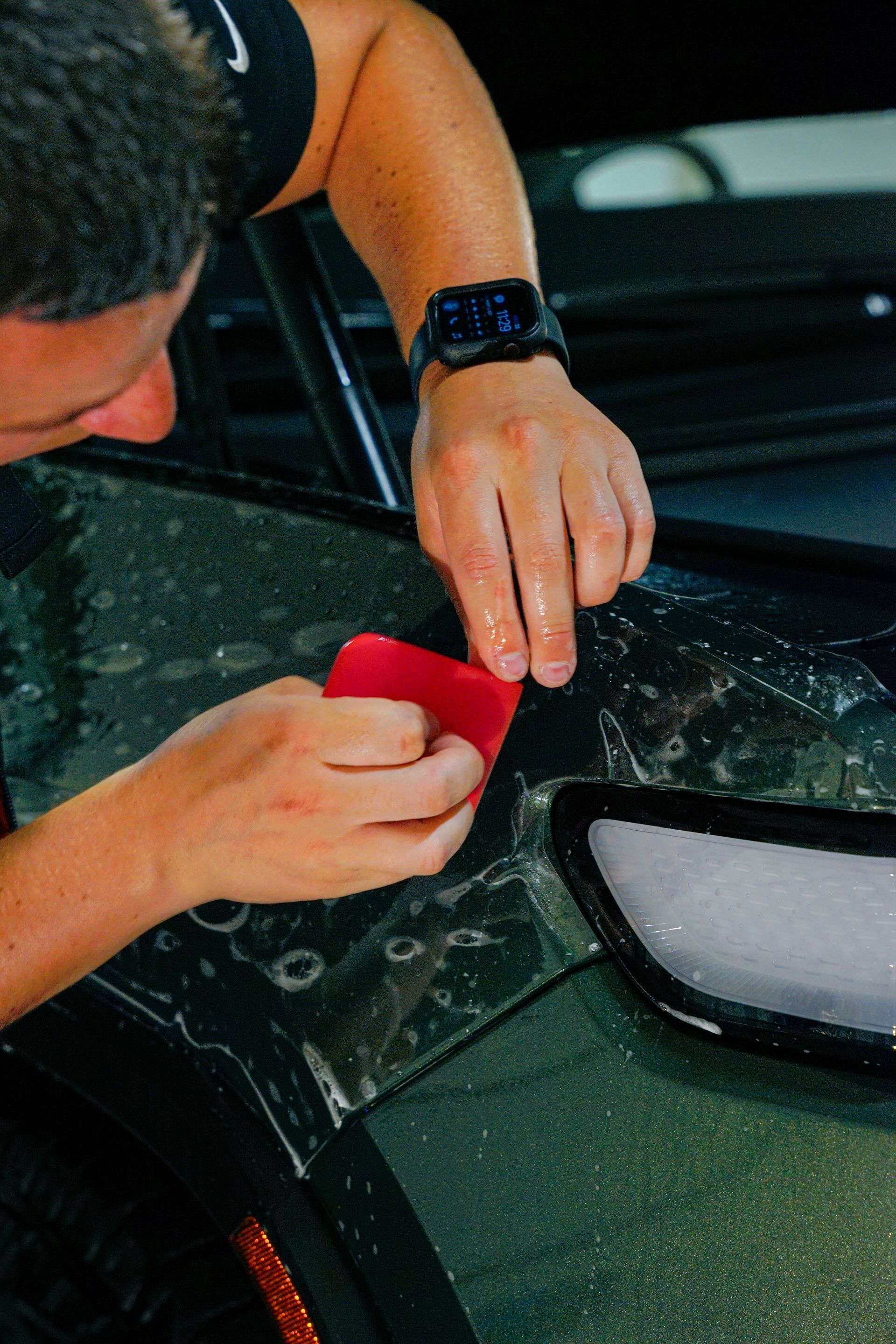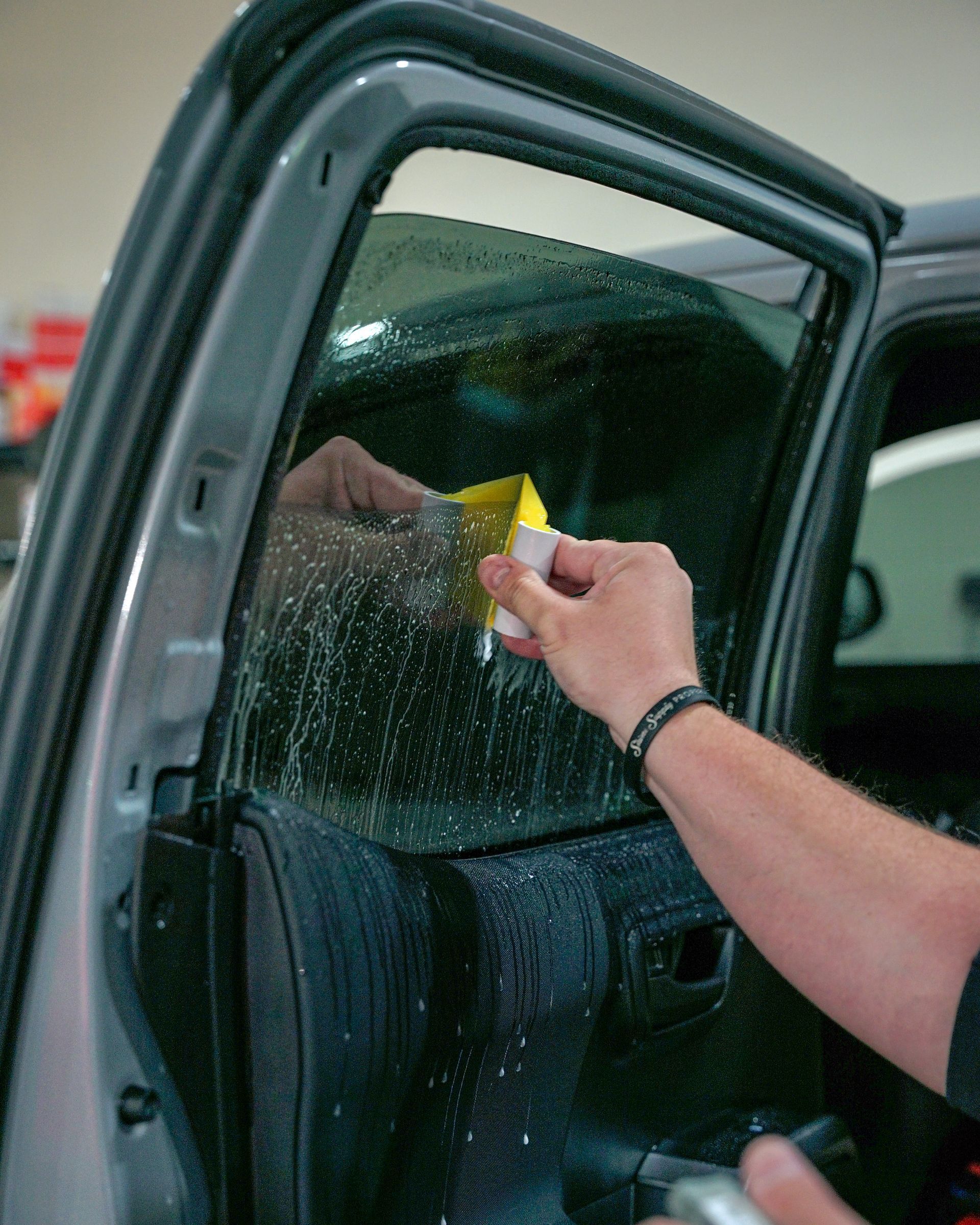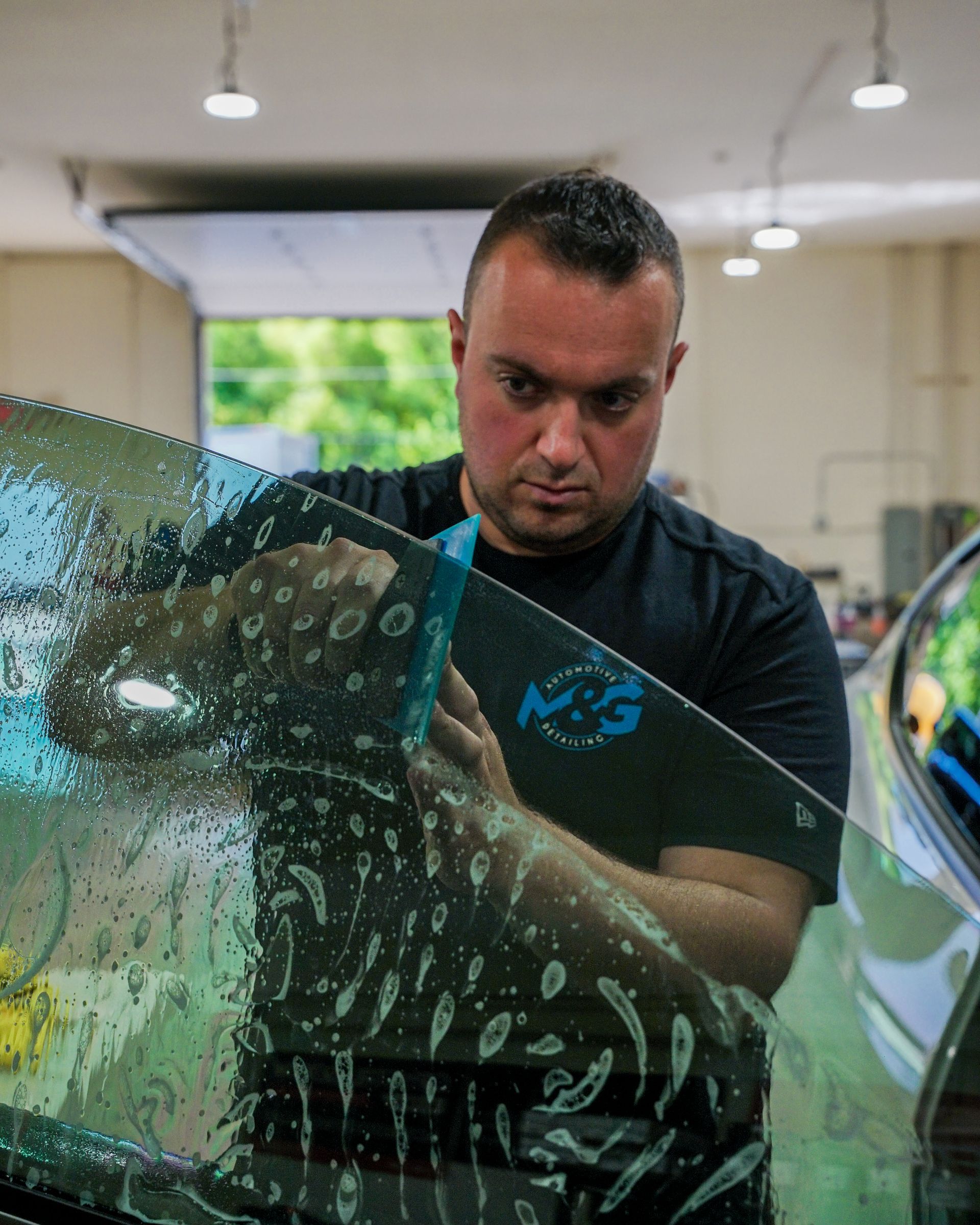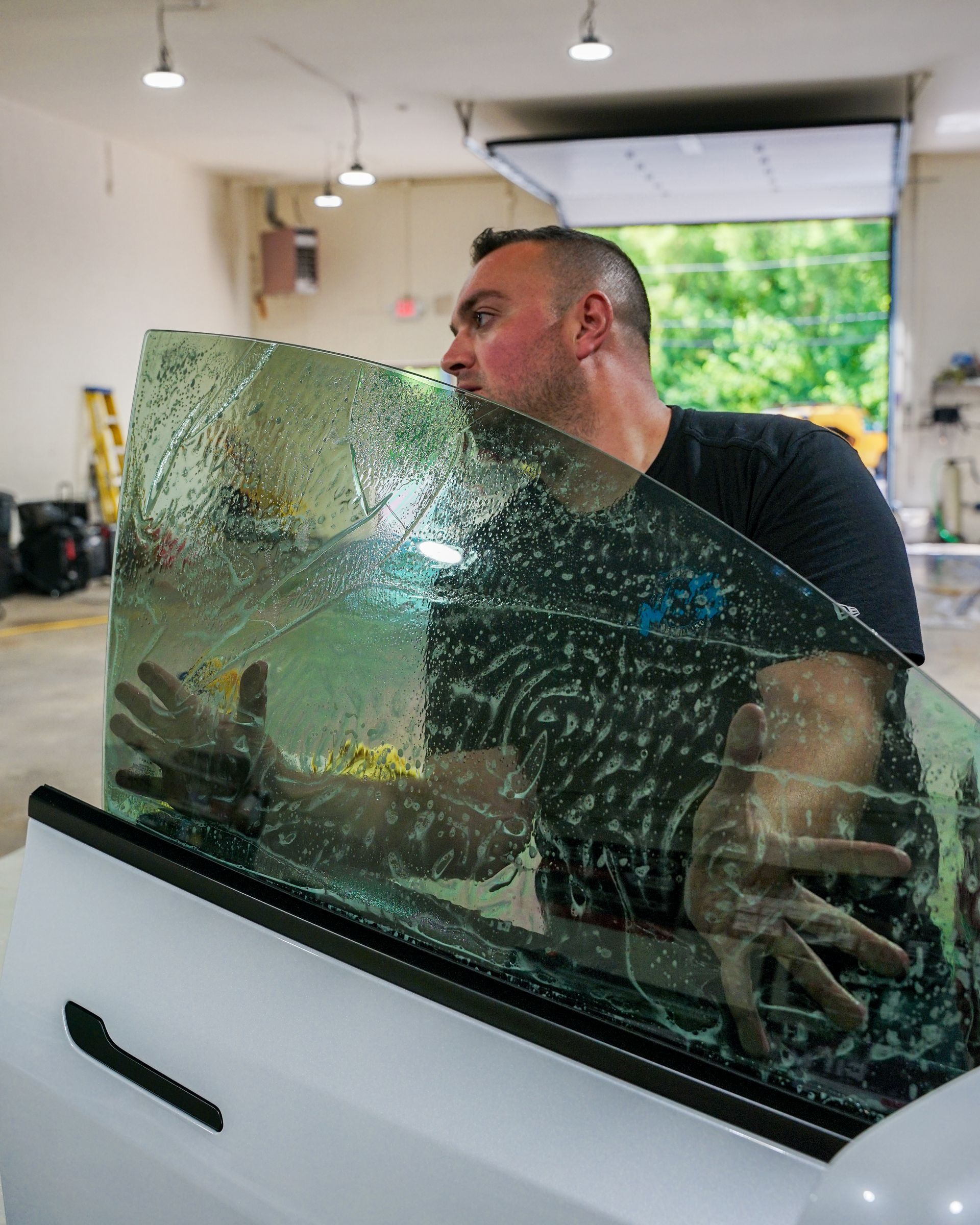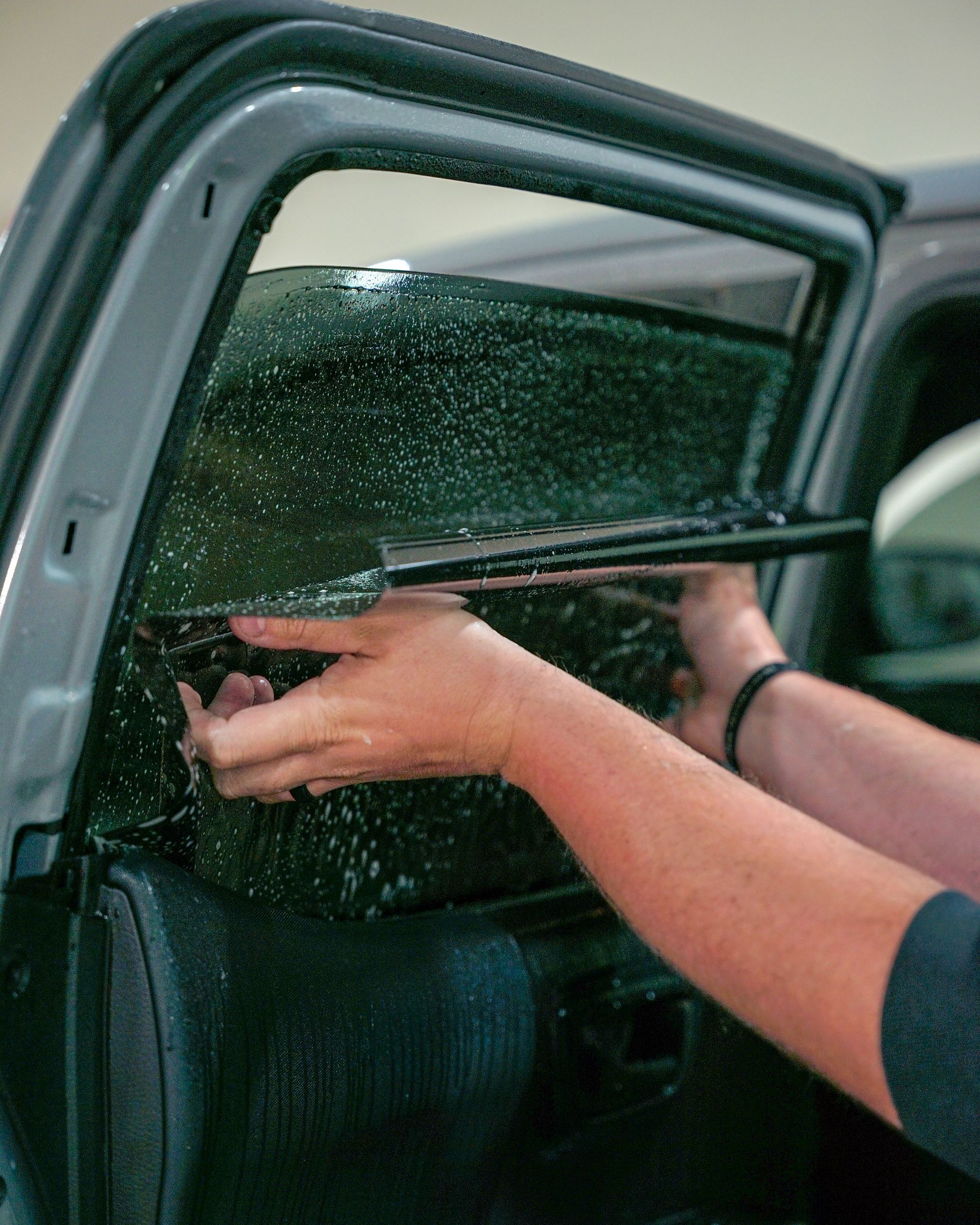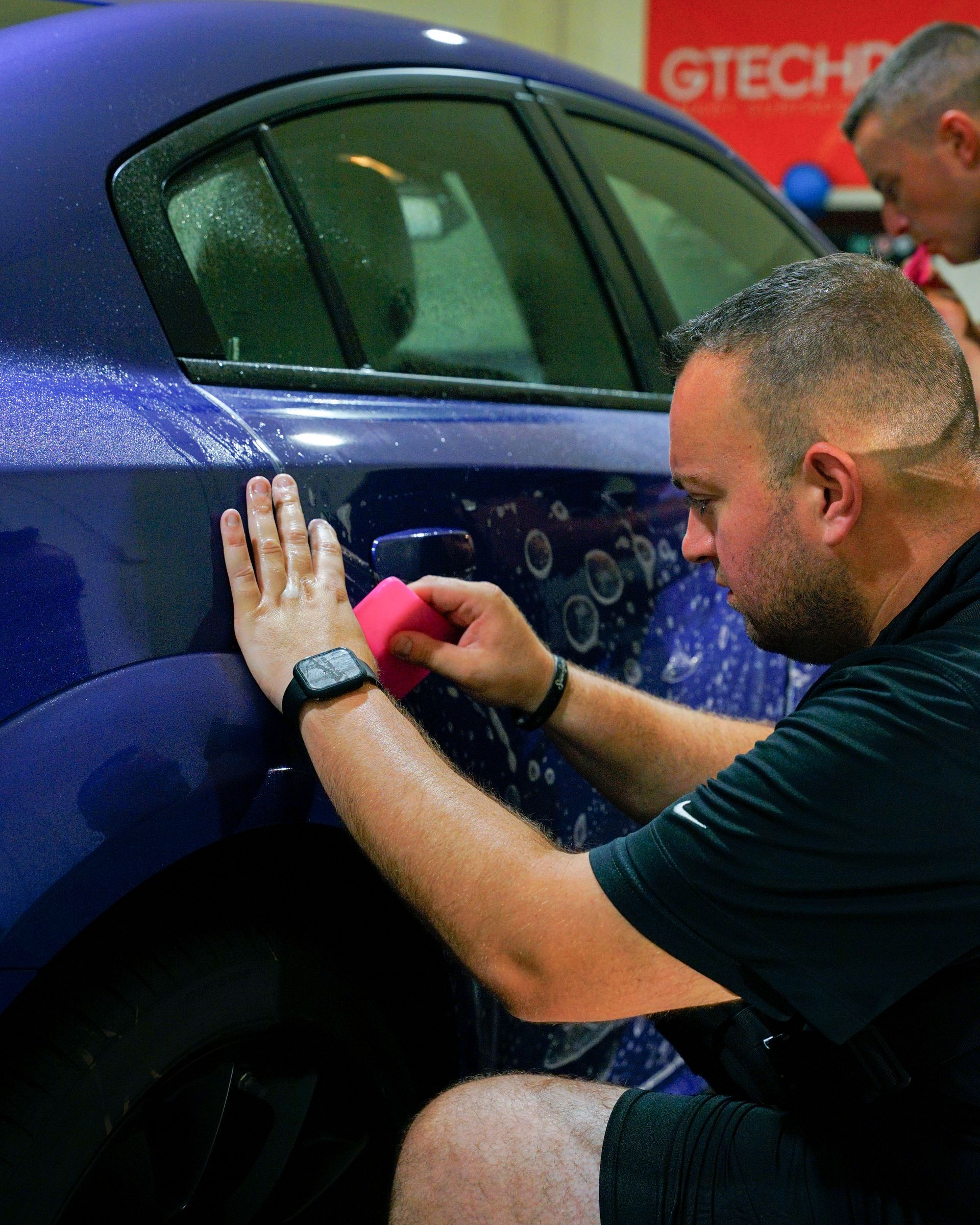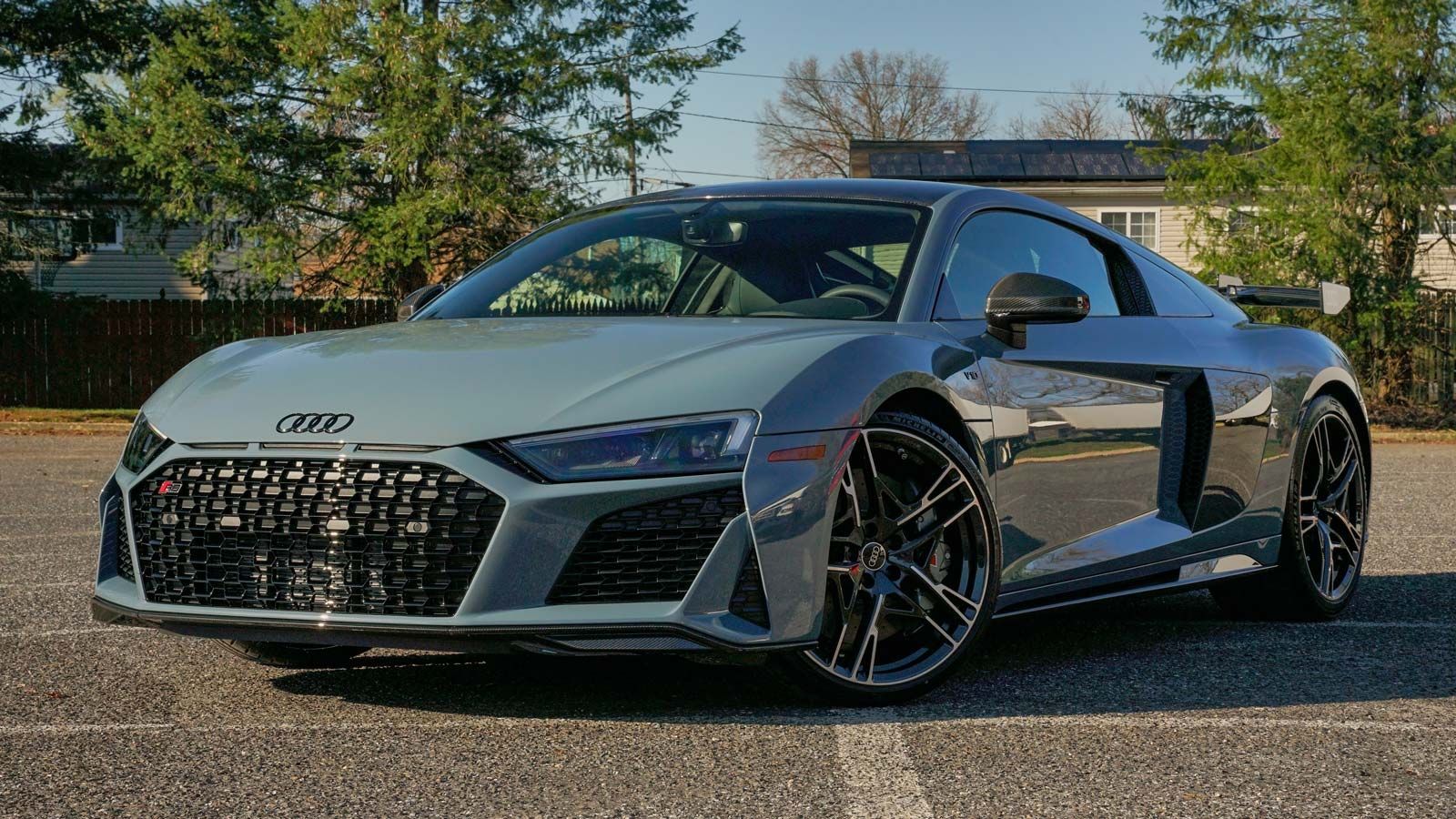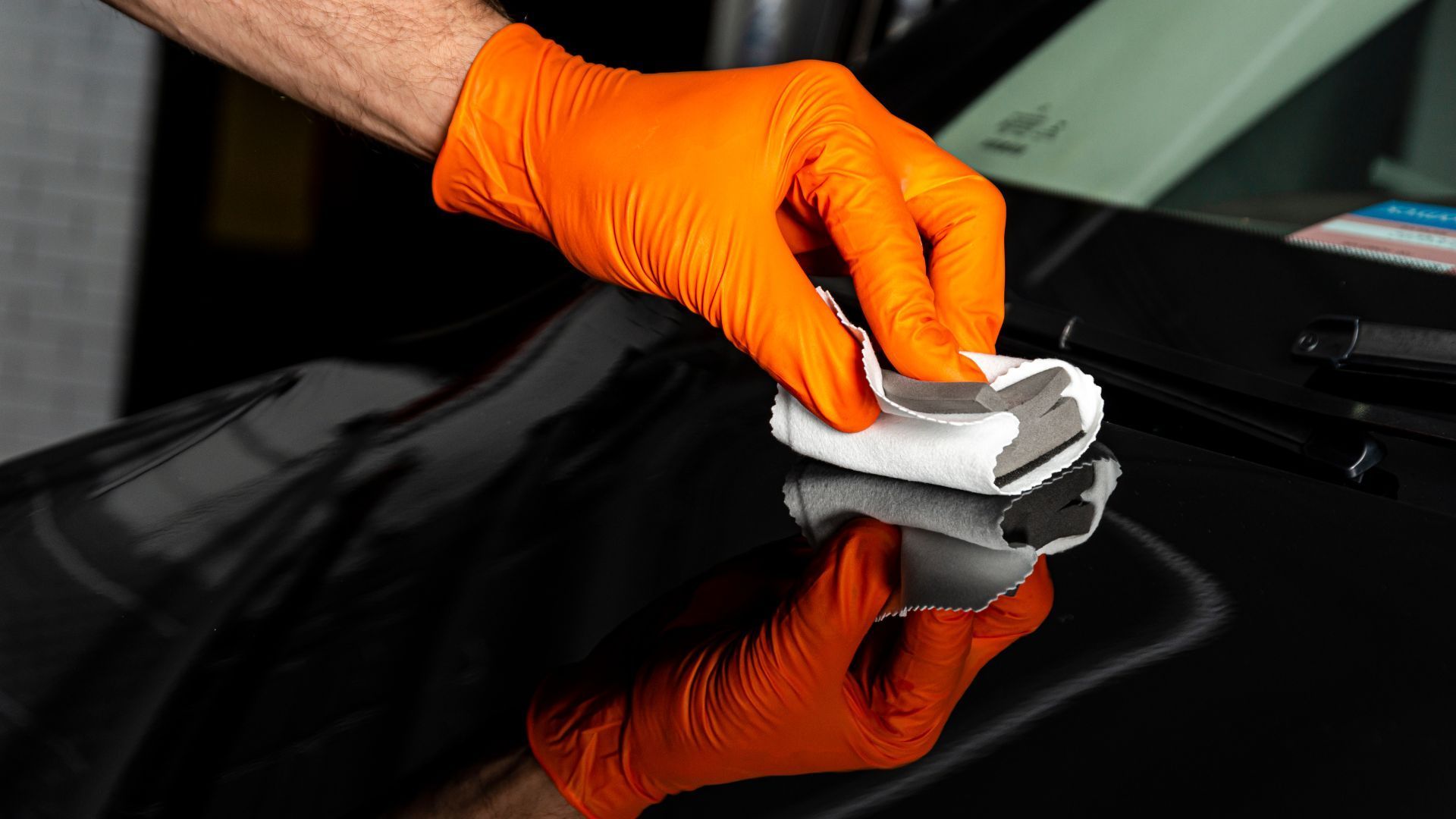Best Time to Get Window Tinting for Your Car: Benefits of Seasonal Installation
When it comes to enhancing your vehicle, window tinting can make a world of difference. Not only does it offer added privacy and style, but it also provides crucial protection from harmful UV rays and reduces heat build-up inside your car. But did you know that the timing of your installation can significantly affect the quality of the tint? That's right! Choosing the right season for window tinting not only impacts how well the film adheres to your windows but can also save you money. So, whether you're looking to beat the summer heat or snag a winter deal, let's dive into when you should consider getting your car windows tinted for the best results.
The best time to get window tinting for your car is during the spring or summer months, as the warmer temperatures help accelerate the curing process, ensuring a better installation. However, winter may offer more competitive pricing from installers due to lower demand, making it an attractive option for budget-conscious customers.
Optimal Season for Car Window Tinting
Spring and summer often stand out as the prime seasons for window tinting, largely due to the warm temperatures that aid in the adhesive’s bonding process. When it’s warmer outside, the heat contributes to a quicker curing of the film, ensuring a tighter seal against your windows without bubbles or imperfections. In sun-soaked states like Florida and California, installers frequently recommend these months for application; the mild conditions give plenty of time for everything to set before the intense summer heat arrives.
Interestingly, a study conducted by the Window Tinting Association revealed that nearly 60% of successful tint applications occur between April and August. This statistic underscores how beneficial it is to schedule installations during warmer months. However, one shouldn't overlook the benefits that fall and winter can bring when it comes to window tinting.
Although cooler temperatures may not seem ideal at first glance, they actually allow for more meticulous work during installation. With lower temperatures, the adhesive does not evaporate as quickly, which means installers have more time to align and apply the film precisely. This can result in higher-quality applications with fewer issues down the road. Moreover, if you’re cost-conscious, consider that many tinting companies offer discounts in winter when business tends to slow. It's an excellent opportunity to receive high-quality service at a lower rate.
Timing Insights
Additionally, specific climate considerations can also inform your decision. Areas that experience extreme heat in summer might benefit from installing tints in early spring or late fall. Not only would this help maintain an optimal temperature inside your vehicle during those seasons, but it will also allow your car's interior materials to relax into their newer state without warping or fading rapidly under consistent UV ray exposure.
While every season presents its unique advantages regarding window tinting, it’s important to weigh both temperature conditions and potential savings when scheduling your installation. As we explore further, understanding how each season enhances the benefits of window tinting can transform your driving experience year-round.
Seasonal Benefits of Window Tinting
The benefits of window tinting truly transform with the changing seasons, providing both immediate comfort and long-lasting protective qualities.
Summer Benefits
In the sweltering heat of summer, a quality window tint becomes an essential companion for your vehicle. As temperatures soar, tinted windows can significantly help in cooling the interior of your car. Imagine stepping into a car that’s been baking under the sun; without window tinting, you might feel like you just opened an oven door. With effective window tint, heat can be reduced inside by as much as 60%, making your drive much more enjoyable.
According to the International Window Film Association, a well-applied tint can block up to 99% of harmful UV rays. This means not only are you fighting off intense heat, but you're also protecting your skin from potential damage while reducing interior fading—an often overlooked benefit of keeping your upholstery and dashboard intact. Think about those scorching afternoons when you'd rather stay in air-conditioned bliss than endure a sticky ride. A good window tint literally transforms your vehicle into a cooler sanctuary. When you’re out on the road during peak sun hours, you’ll appreciate this enhancement more than ever.
Winter Benefits
However, the value doesn’t disappear come winter; it’s merely redefined. While we tend to think less about our cars in colder weather, tinted windows still offer substantial advantages during winter months. For one, they reduce glare from the low-hanging winter sun—something that can be blinding as it reflects off snow or icy roads. This reduction in glare directly contributes to safer driving conditions, which is essential as slips and slides become more common on icy surfaces.
Not only does this higher level of visibility prevent accidents due to blinding sunlight, but quality tints can also enhance insulation within your vehicle. This keeps warmth locked inside, allowing you to enjoy a pleasant ride without cranking up the heater excessively—ultimately saving on gas consumption. What may seem like an afterthought during winter months actually provides significant safety and comfort benefits while driving through cold and potentially hazardous conditions. These seasonal points illustrate how window tinting should be viewed not just as an aesthetic upgrade but as a crucial enhancement that complements your lifestyle throughout the year—with distinct functions tailored for summer heat or winter chill.
With these considerations in mind, understanding more about financial aspects and timeframes involved will allow you to make even more informed decisions regarding installation.
Cost and Timing Factors
When thinking about getting your car windows tinted, understanding the interplay between timing and cost is key to making the most of your investment. One significant factor to consider is off-season discounts. During the winter months, many car window tinting businesses experience a slower period, leading to special promotional rates or discounted prices. This lull means installers are more eager to fill their schedules, often offering incentives for you to book your appointment even when it's chilly outside. If you're willing to brave the cold air for potential savings, pencil that installation into your calendar during the off-season.
As you plan your tinting, don't forget that time of day also plays an essential role. Early morning appointments are often recommended since they give installers ample natural light throughout the day. This allows them to work with great precision while applying the tint film to your windows. Imagine painters starting their work at dawn; they have all day to perfect their strokes without missing any spots due to fading light—window tint installers operate on similar principles. The benefit here is clear: better visibility results in a more flawless finish.
Beyond those factors, other elements come into play when considering the overall cost. For example, the type of window tint chosen can greatly affect the final price, ranging from standard dyed films to more expensive ceramic options. Each kind offers different levels of durability and heat reduction, so knowing what suits your needs best can prevent unexpected expenses later on. Furthermore, the size and make of your vehicle also impact cost estimates because larger vehicles naturally require more materials for coverage.
This brings us back again to the importance of planning carefully—timing not only regarding seasons but also related to daily scheduling—because every decision influences both what you'll pay and how effective your window tinting will be. With these considerations in mind, let's explore the options available through skilled professionals who can handle this task for you.
Professional Tinting Services
The success of your window tinting project truly hinges on the expertise of the professionals you hire. While it may be tempting to consider DIY options or cheaper service providers, the long-term benefits of opting for a reputable installer are undeniable. These specialists not only possess the technical skills needed for proper installation but also understand how different factors affect the performance and durability of the tint film.
Importance of Professional Installation
When you choose a professional service, you're investing in a process that minimizes potential issues such as bubbling, peeling, and improper curing. Remember, these problems aren't just cosmetic; they can compromise both the appearance and functionality of your windows. Opting for a low-cost service might seem appealing at first, yet it often leads to costly repairs down the line due to poor application techniques. This brings us to another significant aspect: ensuring that you engage with qualified professionals.
Checking Credentials
Assessing the qualifications of your service provider can be straightforward but essential. One effective way to ensure quality is by checking for certifications from recognized organizations like the International Window Film Association (IWFA). Such certifications indicate adherence to high standards in installation practices and customer service. Additionally, take time to browse through customer reviews and ratings online. This feedback often reflects previous clients’ levels of satisfaction and experiences with particular installers. A business consistently praised for its attention to detail and professionalism is likely your best bet for achieving high-quality results.
A warranty can serve as further assurance. It adds peace of mind; should any issues arise post-installation, you have coverage that protects your investment. When you focus on professional qualifications, customer feedback, and warranties, you're setting yourself up for success with your window tinting project. With these insights in hand, you're well-prepared to navigate the next steps toward achieving optimal results in your vehicle's appearance and comfort through expert guidance.
Tips for Successful Installation
- Pre-Installation Steps: Achieving the best tint installation begins long before you set foot in the shop. Cleaning your car windows thoroughly is paramount; any dust, dirt, or fingerprints left on the glass can lead to air bubbles or imperfections once the film is applied. Gritty debris trapped underneath can compromise the aesthetics and effectiveness of your new tint. Simple window cleaning spray paired with a microfiber cloth works wonders—the goal here is to leave your windows spotless. Not only does a clean surface allow for better adhesion of the tint film, but it also facilitates a more straightforward application process for the professionals involved. This attention to detail reduces the risk of issues later, ensuring that your investment pays off in appearance and durability.
- Installation Day Considerations: On the day of installation, arrive at the shop prepared with any questions you might have about the process or the materials they’ll be using. It's also helpful to confirm with the installers that they'll be using high-quality films suited to your car's needs. For example, opting for ceramic window films can provide excellent UV protection without compromising visibility. While you're there, take a moment to observe how they handle their equipment; professional care reflects their expertise. A well-prepared environment is essential for a successful outcome—humidity levels should be optimal, as this impacts adhesion.
- Post-Installation Care: After you've had your windows tinted, resist the urge to roll them down for at least 48 hours. This waiting period allows the adhesive to cure and bind fully with the glass. It's especially important if you've chosen a darker or more complex film that requires time to set properly. However, keeping your car protected from the elements during this critical time can make all the difference. Whenever possible, park in a shaded area to protect your newly tinted windows from potential damage due to extreme temperatures. Interestingly, while shade aids in protection, direct sunlight can speed up the curing process in cooler months. The heat from the sun helps dissolve any potential residue that remains after installation. Keep an eye on borders or edges—ensure no lifting occurs while your film sets. If you see any peeling during this time, contact your installer immediately.
Taking these extra precautions not only maintains your car's aesthetic but also prolongs the lifespan and effectiveness of your window tint. By preparing adequately before and caring properly after installation, you're setting yourself up for a superior window tint experience that enhances comfort, privacy, and protection all year round.
With these considerations in mind, let's now turn our focus to methods that can improve both durability and quality in your window tinting journey.
Enhancing Durability and Quality
When it comes to window tinting, choosing high-quality materials makes all the difference. Investing in premium films not only ensures better performance but also provides features like UV protection and scratch resistance. These attributes help keep your car’s interior cooler and protect upholstery from fading under relentless sun exposure. Think of it this way: a cheap movie ticket could lead to a boring film; similarly, opting for low-cost tinting might result in disappointing outcomes.
Choosing Quality Film
Beyond aesthetic benefits, quality films often come with enhanced UV protection, blocking up to 99% of harmful rays. Not only does this safeguard your health, but it also protects your vehicle's components from degradation caused by prolonged sun exposure. Over time, inferior films could lead to heat buildup inside the cabin, affecting everything from leather seats to electronics.
Regular Maintenance
However, even the best films require a bit of TLC to maintain their integrity over the years. Regular care ensures durability and keeps your windows looking sharp and clear. A few simple practices can vastly improve longevity. Opt for soft cloths when cleaning to avoid scratches that could mar the surface of your tint. Steer clear of ammonia-based cleaners—they can wreak havoc on window tints, causing them to deteriorate prematurely.- Make it a habit to inspect your tints regularly for any signs of peeling or bubbles. Catching these issues early allows for timely repairs or replacements.
By consistently ensuring that quality materials are chosen for installation and maintaining them properly afterward, you set yourself up for success. Investing in this process ultimately leads to a brighter drive with enhanced comfort and safety—a small price to pay for long-lasting results that show off both quality and style. In summary, prioritizing high-quality window tinting materials paired with diligent maintenance will significantly enhance your driving experience while safeguarding your investment for years to come.
Premium Window Tinting Services in Cherry Hill, NJ
From scorching summer rays to prying eyes, M&G Automotive Detailing in Cherry Hill, NJ, delivers premium auto window tinting that enhances privacy, blocks harmful UV rays, and adds a sleek edge to any ride. Their expert installers use precision techniques and high-quality films to ensure a flawless, lasting finish. Experience the difference that professional tinting can make—style, protection, and comfort all in one smooth application.

